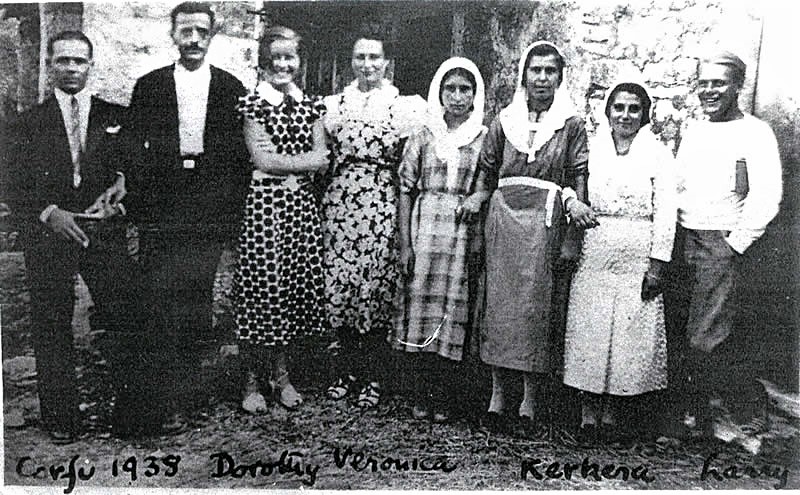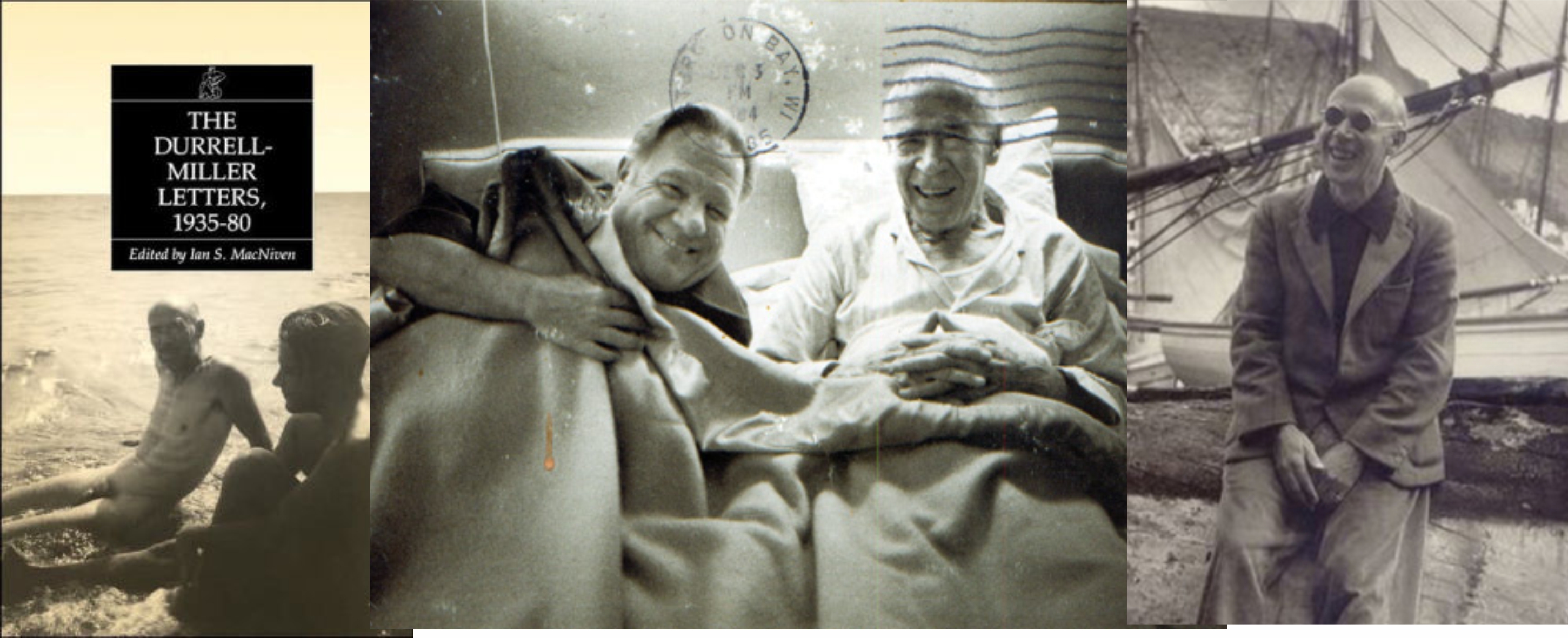

After some months on Corfu, Larry and Nancy were keen to live in a wilder, more romantic part of the island and they fell in love with the rugged North East coastline. In the spring of 1936, Spiros Amerikanos helped them to find a home in Kalami Bay. That home was the White House, rented to them by Tassos and Eleni. Larry and Nancy lived in two of the rooms in the house and the Atheneos family lived in the third. The two families shared the kitchen and dining room. Tassos and Eleni were described as dark, good-looking and quiet by Nancy. Eleni wore the traditional dress of the north of the island with long dark skirts, white blouses, a jerkin and a headscarf. They had two daughters, Frosso who was 7 years old and Tihouli who was younger. The birth of a happy healthy boy in 1937, Giorgos, caused much delight in the family. Lawrence was given the honour of being his Godfather.

In Prospero’s Cell, written from notes made while in Corfu, Lawrence described the high, airy rooms in the White House “where N’s lazy pleasant paintings stare down from the walls”.
Lawrence and Nancy lived happily alongside Tassos, Eleni and their family. The two budding artists spent their time writing, painting, swimming and sailing in their boat.
In August 1937, Lawrence and Nancy left the White House to go on a trip to Paris to meet with the then infamous author Henry Miller.
They left Tassos with the money to build a third storey on the White House so they would have more space and even better views of Kalami Bay and the Albanian mountains beyond.
The cost of the new build is recorded as 43 pounds and 10 shillings and sixpence.
The rest of the Durrell family were also loving their Corfu experience. They regularly visited Lawrence at The White House.
Gerald discovered his love for flora and fauna and was expertly guided and mentored by Theodore.
Spiros took the family on sight-seeing drives and picnics, Louisa enjoyed cooking for family and friends, Margo loved the freedom and sunshine, while Lesley went on hunting expeditions and joined the local police force.

One of these visitors was a close friend of Lawrence, the American author Henry Miller, who visited, and stayed at, the White House in 1939, as the threat of war rumbled ever closer.
He too was enchanted with the island and it’s people. He described the White House as “ample and gracious” and wrote that he could hear the water lapping on the rocks beneath his room.
Henry met Tassos, Eleni and their children, including the young Giorgos, and thoroughly enjoyed the summer days in Kalami. He sunbathed naked with Larry and Nancy and swam in the clear waters of Kalami Bay.
Henry Miller fell in love with Greece while he was in Corfu.
His travels later took him to Athens, the islands and the Peloponnese and were the inspiration for his most famous book, "The Coloussus of Maroussi", published in 1941.
Unfortunately, by August 1939, the advance of Hitler’s troops overshadowed this idyll.
The Greek king returned suddenly to Athens and the Greek army were mobilised. Only days before war was declared between Germany and Britain, Louisa Durrell decided to leave Corfu for England, with Gerald and Leslie.
Lawrence and Nancy made the decision to leave too and decided to travel to Athens.
At the White House,the Atheneos family were devasted to see Larry and Nancy leave, but it was probably harder for the young couple themselves to leave their "Eden".
In Lawrence’s words, the White House, “…set like a dice on a rock already venerable with the scars of wind and water” was their “...unregretted home. A world.”
In later years, the gift of the Durrell family to their island home, was to write about Corfu; to write with such love and imagery that it sold the beauty of the island to the world.
Through Lawrence's "Prospero’s Cell" and Gerald Durrell's "Corfu Trilogy", readers glimpsed the charm of Corfu and started to visit the island to capture the magic for themselves.
|
|